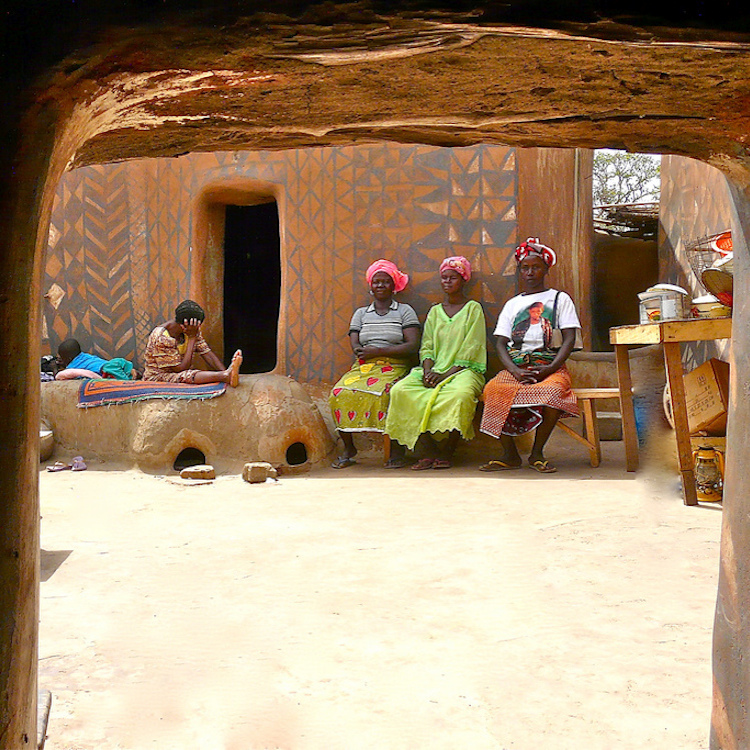TIEBELE, Burkina Faso — Cultural signifiers of wealth and power are interesting things. What can one use to show status? In one elite and closed-off village those signifiers are umbrellas and beautifully-painted homes.
Above image: Photographs by Rita Willaert.
The village of Tiébélé in the West African country of Burkina Faso may be one of the most exclusive neighborhoods on the planet; it’s completely closed off to outsiders. The village is the seat of local nobility and they are so protective of their home that travel writer Olga Stavrakis wrote that merely getting a glimpse at Tiébélé cost her a year’s worth of negotiations. To set this village apart, the residents paint their houses in a grand, ornate style.
… It was only through a process of year long negotiations that we were permitted to enter the royal palace the entrance of which is pictured here. They were awaiting us and the grand old men of the village, the nobility, were all seated waiting for us. Each of the villages has muslims and animists (local religions) and no one much cares who believes in what. However, we were told in advance that we must not wear anything red and we may not carry an umbrella. Only the chiefly noble family is permitted that privilege and to do so would constitute a great affront to our hosts…
We were reminded of the clay wall paintings by artists such as Yusuke Asai, but these Tiébélé photographs, shot by Rita Willaert, quickly show how the designs are weighted by cultural signifiers from the Kassena people. My favorite of the bunch is a black and white mausoleum, densely patterned with a lone square window. Once I knew what I was looking at, I had a leg up on “reading” the building.
The village may open to tourists in the future, but don’t hold your breath. In the meantime, we suggest you read more about it on this travel journal. There are many more pictures of the site available here.
Bill Rodgers is the Managing Editor of cfile.daily.
Do you love or loathe these works of (not quite) contemporary ceramic art? Let us know in the comments.














I love these clay and patterned dwellings and palace. 30 years ago I had a full size wall-mount calendar with similar/exactly similar West African images. Later on, I found those same calendar images printed on oversize postcards. I used all of the cards and finally tossed out the calendar from the wear and tear of use in the classroom. It is actually stirring my heart to see these images. I don’t know why clay dwellings are so magnetic…elemental. Ukrainian Steppe architecture or unstabilized adobe from the Southwest grab me for their purity of 100% earth material.